Netherland Dwarf rabbits are the smallest domesticated rabbit breed – fully grown, they weigh about 2lb (900g). Their small size and babyish features have made Dwarf rabbits popular pets, and in 2018 around 13-18% of pet rabbits sold were Netherland Dwarves.
Thoroughly researching Netherland Dwarf rabbit health, care, temperament and personality is vital before committing to a decade of caring for one.
Where Does the Netherland Dwarf Rabbit Come From?
It’s not a trick question, Netherland Dwarf rabbits do in fact come from the Netherlands! Netherland Dwarf rabbits were the life’s work and legacy of Dutch rabbit breeder Jan Meyering, at the beginning of the 20th century.
His aim was to use existing domestic rabbit breeds and wild rabbits to create a new standardized dwarf breed, available in many colors.
His new rabbits quickly gained fans across Europe, and then hopped across the pond to the USA.
Since the earliest Netherland Dwarf rabbits were selected for size above all else, a lot of them retained a wild rabbit’s temperament and fear of people.
In a minute, we’ll find out if that’s still true of today’s Netherland Dwarf rabbits.
What Do Netherland Dwarf Rabbits Need?
- Unlimited access to fresh drinking water
- A rabbit-sized amount of quality hay
- A cup full of green leafy vegetables
- Quarter to half a cup of rabbit pellets
The majority of your rabbit’s diet should consist of a good quality hay, such as Timothy hay. And commercially prepared dry food should be limited. Pellets are better than mixed muesli or cereal type foods which allow rabbits to pick out the sweetest and least nutritious components. Your rabbit needs sufficient hay, vegetables and water to keep their digestive system in good working order.
Fun Facts About the Netherland Dwarf Rabbit
Netherland Dwarf rabbits are very popular in Japan, where they fit perfectly into “kawaii”, or the culture of cuteness.
One Japanese Netherland Dwarf rabbit called Sora has over 13,000 followers on Instagram!
Netherland Dwarf rabbits actually come in two sizes, known as true and false dwarves (more on this coming up).
Netherland Dwarf Rabbit Appearance
These rabbits are very round, and very small.
Their body shape is known as cobby, which means short and thickset.
They have shorter ears than most rabbits, and their nose and jaw are very short so their head looks small and babyish.
Their short fur comes in a vast array of colors and patterns from black to opal and tortoiseshell to patchy.
Size and Structure
And these pets truly are petite – fully grown, true dwarves rarely weigh more than 2 lbs.
False dwarves are a little longer and heavier, with ears set slightly further apart.
The difference is small, and only really significant if you plan to breed baby Netherland Dwarf bunnies.
But it’s also quite interesting, so let’s go there briefly.
Netherland Dwarf Rabbit facts – True and False Dwarfism
Rabbits inherit all their genes in pairs – one half from each parent (just like we do!).
Lots of genes influence a rabbit’s size, but one has special significance – the Dwarf gene
And because genes come in pairs, the Dwarf gene also has an analogue, called Normal.
So Netherland Dwarf rabbits can either inherit a matching pair of Dwarf genes (Dwarf/Dwarf), a Dwarf gene from one parent but not the other (Dwarf/Normal), or a matching pair of Normal genes (Normal/Normal).
Rabbits with Dwarf/Dwarf genes are called Peanuts, because they barely measure two inches long at birth.
Are These Rabbits Healthy?
Sadly for them, inheriting two copies of the Dwarf gene is fatal – kittens are invariably stillborn, or die shortly birth due to abnormalities in their brain and digestive system.
Rabbits with the Dwarf/Normal combination are true Dwarves – these are the Netherland Dwarf bunnies that are eligible for the show ring and command the most money.
Netherland Dwarf Rabbits with two Normal genes are false Dwarves.
Dwarf Rabbits Without any Dwarf genes?
That’s right.
Even without the Dwarf gene, a Netherland Dwarf rabbit doesn’t suddenly become massive.
To a casual observer, they still look very much like a Netherland Dwarf bunny.
False Dwarf does are also important for breeding more True Dwarf kittens, and False Dwarf bucks still make great pets.
Depending on their parentage, it is possible for a single litter to contain Peanuts, True Dwarf and False Dwarf kittens.
And that’s enough genetics for now, next let’s see what your Netherland Dwarf bunny’s personality will be like…
Netherland Dwarf Rabbit Temperament
Netherland Dwarf rabbit personality is still very close to wild rabbit temperament.
They are very alert, energetic, and constantly on the move looking for tasty food sources.
In small groups and in familiar surroundings the Netherland Dwarf rabbit personality is often playful. They enjoy having a stash of toys to explore.
Are Netherland Dwarf Rabbits Friendly?
Kittens well socialised from a young age have the best chance of being calm and confident around people.
However many Netherland Dwarves still retain much of the twitchiness of their wild ancestors and resist being handled.
On the whole, this breed lacks the placid demeanor to make a friendly lap pet.
But get them used to the idea of you as a gentle friend who brings great food, and you’ll still be sure of a warm greeting at the hutch door!
Do Netherland Dwarf Rabbits Bite?
Even the smallest bunnies can deliver a fierce nip if they think you’re about to hurt them, or you make a sudden and unwelcome arrival in “their” territory.
Remember that all rabbits are used to being prey species – they’ve survived this far by being hyper alert and quick to react to possible predators.
Give your new rabbit lots of time to get used to you. Approach them slowly over time, and let them come to you as their confidence grows.
Bear in mind that they are far-sighted too. Offering your hand up close for them to sniff might seem like a peaceful gesture to you, but to them it’s likely to be out of focus and startling!
Netherland Dwarf Rabbit Health
Before bringing home any new pet, it boosts our confidence to know what health problems we might one day be dealing with.
Overall, bear in mind that Netherland Dwarf rabbits are very fragile.
Their bones are small, light and easily broken if they’re dropped.
Here’s an overview of the other health concerns most likely to affect your baby Netherland Dwarf rabbit as he grows up.
Netherland Dwarf rabbit face shape
Compared to larger rabbit breeds, Netherland Dwarfs aren’t just small all over, their faces are far more brachycephalic (which means flatter, like a Pug dog or Persian cat)
This is a result of changes in developmental timing, which causes the snout to spend less time growing at the maximum growth rate.
In 2017, the Rabbit Welfare Association, International Cat Care and the RSPCA teamed up to launch a campaign on behalf of rabbits cats and dogs bred for excessively flattened faces.
The campaign included a striking image of an adult Netherland Dwarf rabbit’s profile superimposed over a wild rabbit’s profile, to show just how far this domestic breed has been removed from the shape nature intended.
Brachycephaly in Netherland Dwarf rabbits
At the time of writing in 2019, we are only just starting to see the first scientific studies into the health and welfare of brachycephalic rabbit breeds being published.
Already, we have scientific evidence that flat-faced rabbits have a more than three times higher risk of dental disease than their wild-shaped cousins.
If the impact of their skull shape continues to be analogous to brachycephalic dogs and cats, we can expect to discover that Netherland Dwarf rabbits also have difficulty breathing and increased vulnerability to respiratory tract infections.
Dental problems in Netherland Dwarf rabbits
Hereditary malocclusion – where the front teeth wear unevenly so that eventually the rabbit struggles to eat – is particularly common in Netherland Dwarf rabbits.
This is because selecting rabbits for flattened faces gives them abnormally small jaws; jaws that struggle to contain a whole rabbit’s worth of teeth.
At its worst, hereditary malocclusion in Netherland Dwarves causes lacerations in their mouth, abscesses, and misshapen tear ducts which leak pus.
Netherland Dwarf rabbits need to have their teeth checked regularly for signs of malocclusion, and tracking their weight will also help to tell you if they are managing to eat properly.
Infectious diseases
As well as the health risks of their shape, Netherland Dwarf rabbits are susceptible to the same infectious diseases as all rabbits.
The most common are:
Myxomatosis
Myxomatosis is a nasty virus spread by mosquitoes and fleas.
It usually begins with puffy eyelids, pus-producing conjunctivitis, and swelling all over the body.
Sadly it is invariably fatal – consult your vet for guidance as soon as you spot symptoms.
The House Rabbit Society does its best to maintain a list of areas in America where myxomatosis outbreaks have been reported, and your vet can give you advice on protecting your rabbit in these areas.
Rabbit Hemorrhagic Disease
This is a highly infectious viral disease which which was first reported in China in 1984 and is now found all over the world.
As of 2016 it has been tentatively eradicated in the USA, but outbreaks have not been unheard of.
Encephalitozoon cuniculi
E. cuniculi is a parasitic infection which causes progressive weakness and paralysis.
The earliest symptoms often include head tilt, unsteadiness, neck spasms and urinary incontinence.
Worming your rabbits can help to protect them, and infections caught early enough can sometimes be treated with antiparasitic medicines.
Flystrike
Finally, flystrike is a horrible problem where flies lay their eggs in dirty fur around rabbits’ bottoms.
When the eggs hatch, the maggots begin to eat the rabbit’s skin, quickly causing large wounds.
Protect your bunny by making sure their fur stays clean, and checking their bottom every day, especially in summer.
How Long Does a Netherland Dwarf Rabbit Live?
Like most domestic rabbit breeds, a healthy Netherland Dwarf rabbit can live 7- 10 years.
With a fair wind, some live even longer.
Factors like the the company of a fellow rabbit, the right diet, a large enough habitat, and unrestricted access to space for exercise will improve the lifespan of a bunny.
Are Netherland Dwarf Rabbits Good Pets?
Netherland Dwarf rabbits are lively little characters, and they can provide hours of amusement for older children and adults.
Although their proportions give the impression of being easy to pick up and handle, their skittish temperament and fragile size make them a poor match for young children.
But most significantly to us, the Netherland Dwarf rabbit has been increasingly bred for an extremely flattened face shape.
This has made them excessively prone to dental disease, and a multitude of horrible complications from that.
Choose The Best Breeders
We advocate against breeding and selling animals which have been deliberately bred for a body shape which makes them prone to disease.
So unfortunately, we cannot recommend buying a Netherland Dwarf as your next pet.
However, a great many pet rabbits end up being relinquished to animal shelters, so please consider rescuing one instead.
Rescuing a Netherland Dwarf Rabbit
Sadly, rabbits are among the most common animals left at rescue shelters.
Rabbits are abandoned because
- people buy them expecting them to be cuddly, and are disappointed by the reality
- or they buy them for children, who lose interest
- or their owners’ circumstances simply change beyond their control.
Since Netherland Dwarf rabbits are so popular, it’s highly likely that a rabbit rescue near you includes some.
Talk to shelter managers about the kind of pet you’re hoping to find, and take some time visiting the animals they have before you bring one home.
Giving them a second opportunity at a happy life can be hugely rewarding and unforgettable!
Caring for a Baby Netherland Dwarf Rabbit
Bringing home your first rabbit requires a lot of preparation.
You’ll need to bear in mind that
- Rabbits should be kept in pairs or groups.
- Despite their size, Netherland Dwarf rabbits can rival many a larger breed in terms of energy, and they need lots of space and opportunity to exercise every day.
- Rabbits need unlimited hay and fresh water, as well as small quantities of high-fiber rabbit pellets and daily access to fresh grass or leafy green vegetables.
- Avoid muesli-type rabbit food from the pet store, as these are fattening and low in calcium, which has fueled a rise in dental disease among domestic rabbits.
Do Netherland Dwarf Rabbits Shed?
Netherland Dwarf rabbits have a medium-short coat which only sheds a little throughout the year.
If your Netherland Dwarf bunny roams freely around your house, you might find that they leave a bit more fur on the floor in spring and fall as their coat adapts to the changing climate.
Whilst they can generally take care of their own grooming, brushing your rabbit occasionally is a great chance to bond with them and a valuable opportunity to spot illnesses quickly.
Do Dwarf Rabbits Smell?
Healthy rabbits have a lovely smell! They’re fastidious about personal grooming, so the only odor you’ll get off your bunny is of clean fur and fresh hay.
Their urine does have a noticeable aroma though, so to keep their whole habitat sweet smelling, clean it out regularly and target the areas they use for toiletting every day.
If you ever notice a foul smell coming from your rabbit, it could be a sign of disease, so take them to the vet right away.
Showing Your Netherland Dwarf Rabbit
Unsurprisingly for a breed prized for its looks, many owners are interested in showing their rabbit.
Show rabbits must be true dwarves not exceeding 2.2 lbs.
Netherland Dwarf bunnies come in a staggering 26 showable colors and a further 10 colors which are registerable, but not showable.
To find out if your rabbit qualifies for showing, and the criteria they’ll be judged against, have a look at the breed standard of perfection.
Netherland Dwarf Rabbit Products and Accessories
There are some things all bunnies love in common, and all rabbit owners swear by.
Elsewhere on the site, we’ve rounded up the best DIY rabbit toys and the best you can simply buy – perfect for a lively Dwarf Netherland bunny who needs stimulation but prefers his own company.
We’ve also been on the lookout for the best outdoor rabbit hutch vs the best indoor cage, and the best rabbit nesting box for your rabbit to bed down in style.
And to make your life easier, we’ve found the best rabbit water bottles and grooming brushes too.
Similar Breeds
Rather than a Netherland Dwarf rabbit, we urge you to consider one of these other small rabbit breeds instead:
- Dutch Rabbit
- Dwarf Hotot
- Mini Rex
Is A Netherland Dwarf Rabbit Right For Me?
This is probably one of the most misunderstood rabbit breeds.
They look cute and cuddly but many don’t like being held.
They’re small, but they need heaps of space.
Plus, they don’t even need to have a Dwarf gene!
But most of all, they have been bred to the brink of a population-wide health crisis, all in pursuit of a face that stays looking babyish forever.
And for that reason, we recommend choosing one of the other rabbit breeds listed above instead for your next rabbit.
Do you have a Netherland Dwarf bunny buddy?
Are they still wild at heart, or happy lap-loungers?
What are your views on the trend for breeding increasingly flat-faced Netherland Dwarves?
Please share your experiences and join the debate in the comments section below!
References and Resources
- American Netherland Dwarf Rabbit Club
- People’s Dispensary for Sick Animals, Netherland Dwarf Rabbit.
- American Rabbit Breeders Association, Inc., ARBA Recognized Breeds.
- American Rabbit Breeders Association, Inc. ARBA Official Breed ID Guide.
- Fiorello, C. V. and German, R. Z. (1997). Heterochrony within species; Craniofacial growth in giant, standard, and dwarf rabbits. Evolution, 51.
- Richardson, V. C. G. Rabbits: Health, husbandry, and diseases. John WIley & Sons.
- Clauss, M. and Hatt, J. (2017). Evidence-based rabbit housing and nutrition. Veterinary Clinics: Exotic Animal Practice, 20.
- Harcourt-Brown, F. M. (2009). Dental disease in pet rabbits 1. Normal dentition, pathogenesis and aetiology. In Practice.
- Siriporn & Weerakhun, How to prevent dental disease in rabbit; risk factor in dental disease, Thai Journal of Veterinary Medicine, 2017.
- Gosling et al, The Status of Pet Rabbit Breeding and Online Sales in the UK: A Glimpse into an Otherwise Elusive Industry, Animals, 2018.

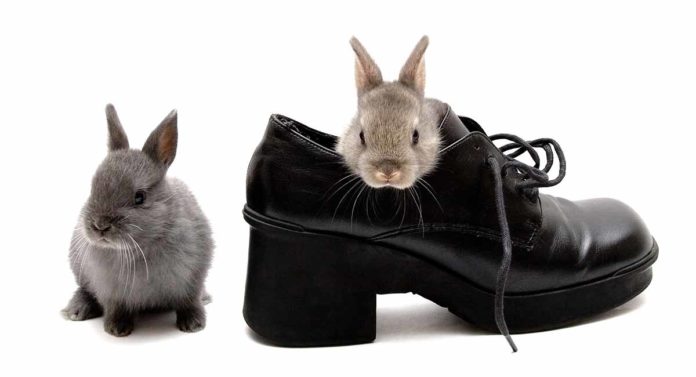
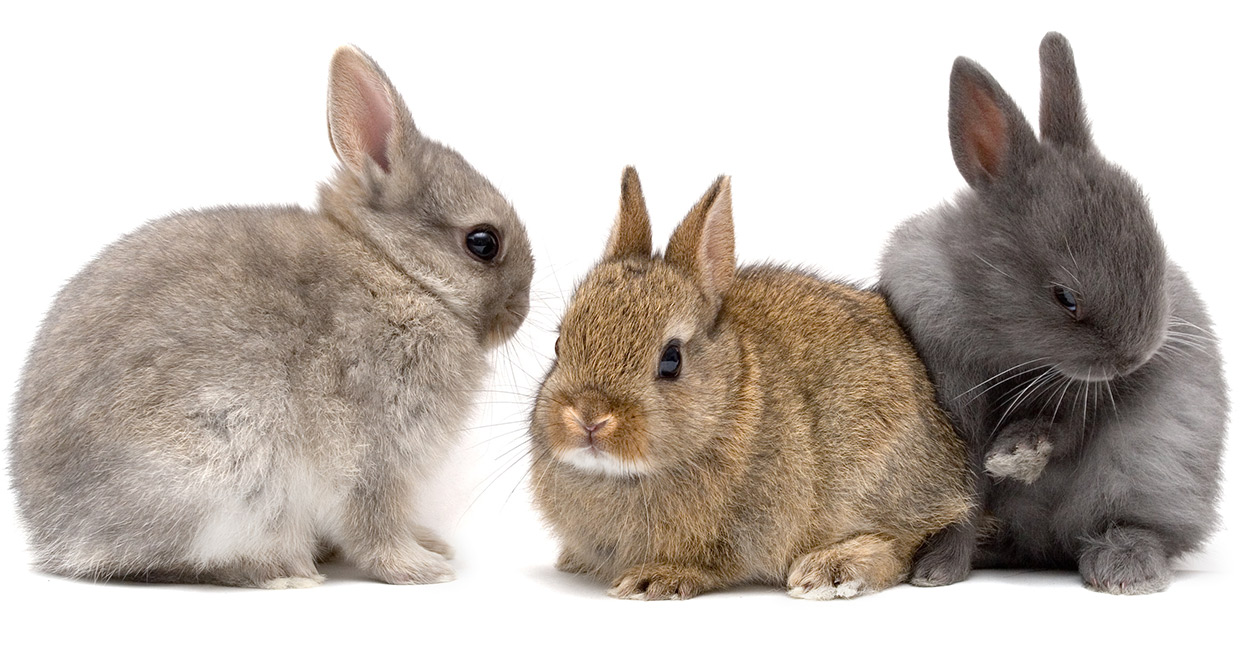
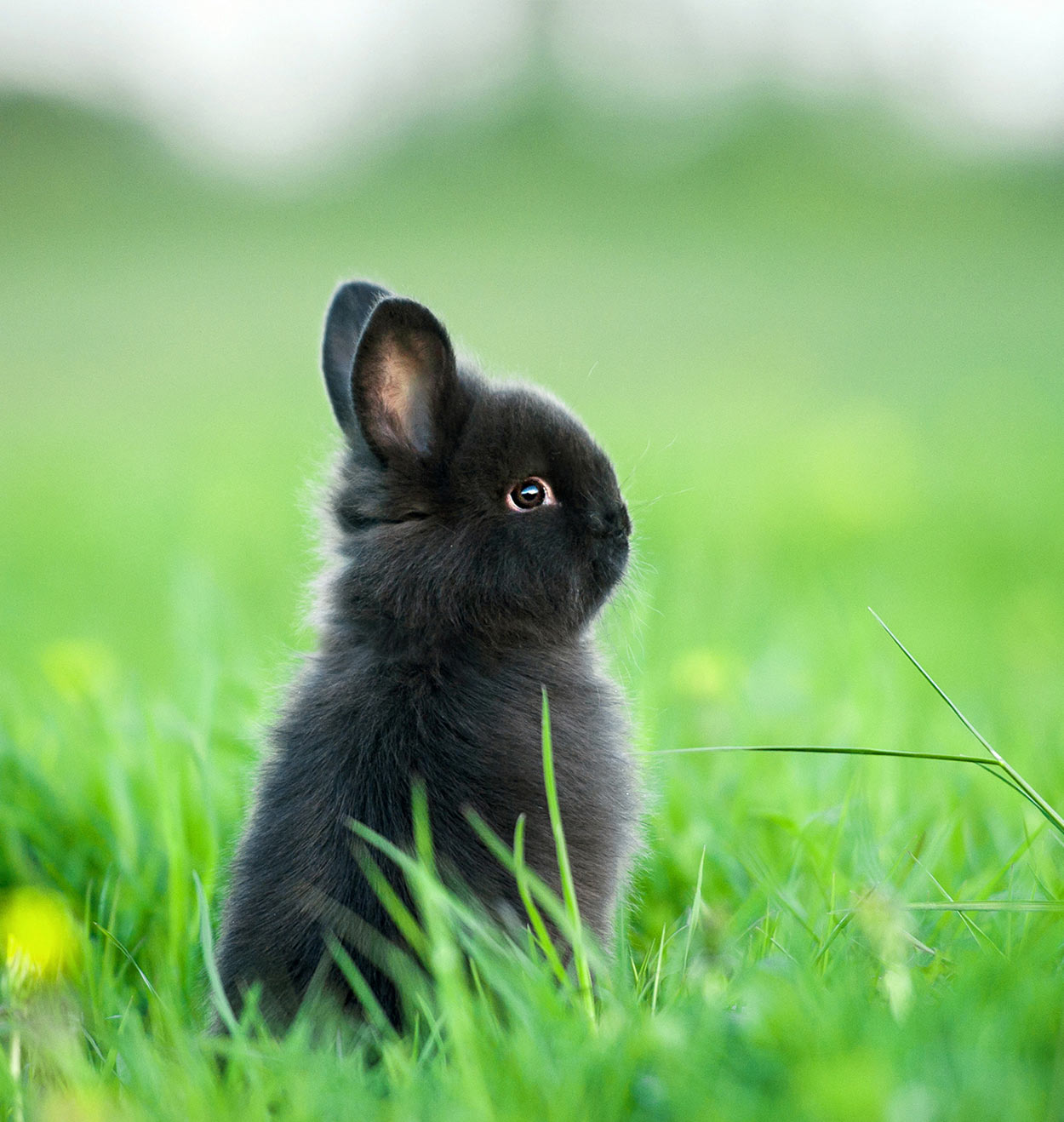
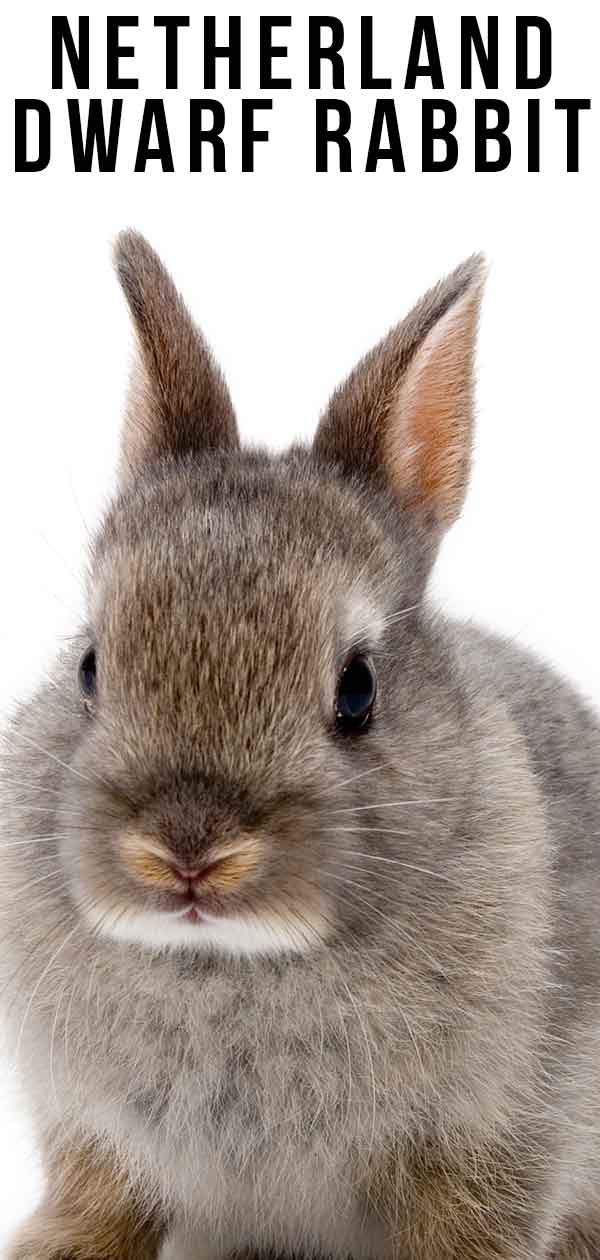
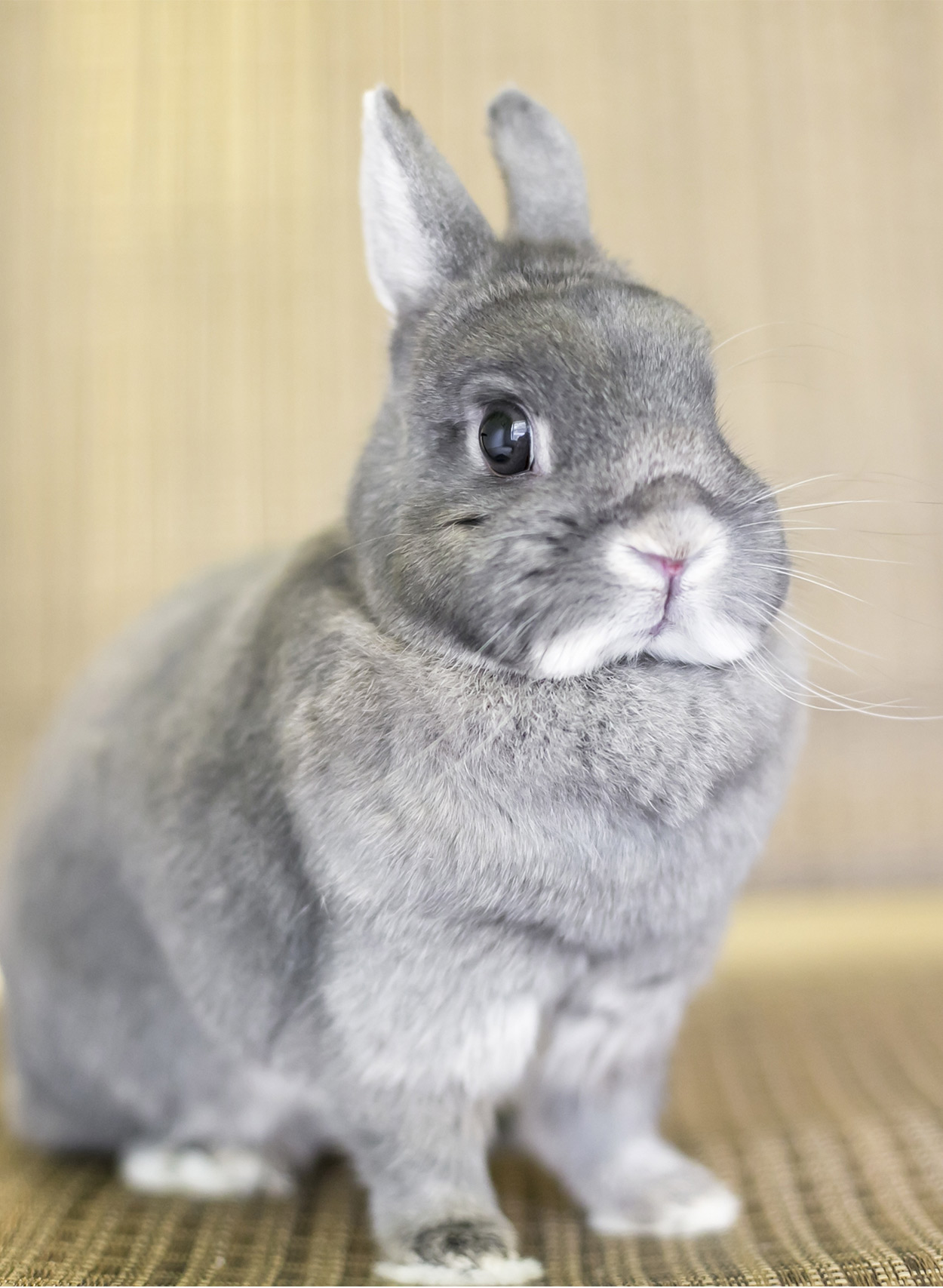
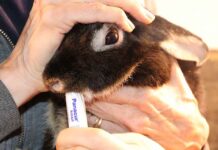
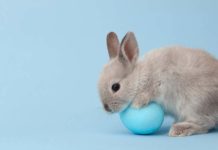
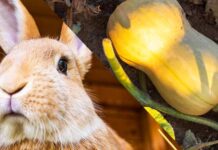










OK, I do not agree on the existence of he so-called “dwarf gene” vs “normal gene”. Dwarfism in rabbits is defined according a standard of perfection. As far as weight is concerned, you find judges from different countries with different interpretations of that standard of perfection. Take a 2.2 pounds rabbit; according to the Dutch standard, it is a true dwarf, but according the English standard, it is NOT ! Now, it is the very same rabbit from a genetic point of view ! As far as “peanut” dwarves are concerned, you find peanut mice in the litters; now, dwarf mice do not exist ! Oliver from France
thank you for this, i leaned alot about my bunny!
I’ve had my Netherland dwarf, Bunbun for 7 years now, he was a rescue from someone who got them for their children. He is my BBFF (Best Bunny Friend Forever ). I love him so much and I would do absolutely anything for him! He is sometimes feisty and EXTREMELY stubborn . Twice he actually charged at someone and nipped them because he felt I was in danger. He just LOVES TO BE LOVED and he’s an amazing little guy.
I disagree with breeding animals like this because I think it’s very selfish of people and it makes me sad. Though I wouldn’t trade my little bun for anything!
My Netherland is 10 years old ( and 2 months). Lately she is avoiding putting weight on one of her hind legs, but other thank that she has s fine. She is eating and drinking as usual, so I don’t want to put her down, but I was wondering if she might be in a lot of pain in that hind leg. Probably arthritis.